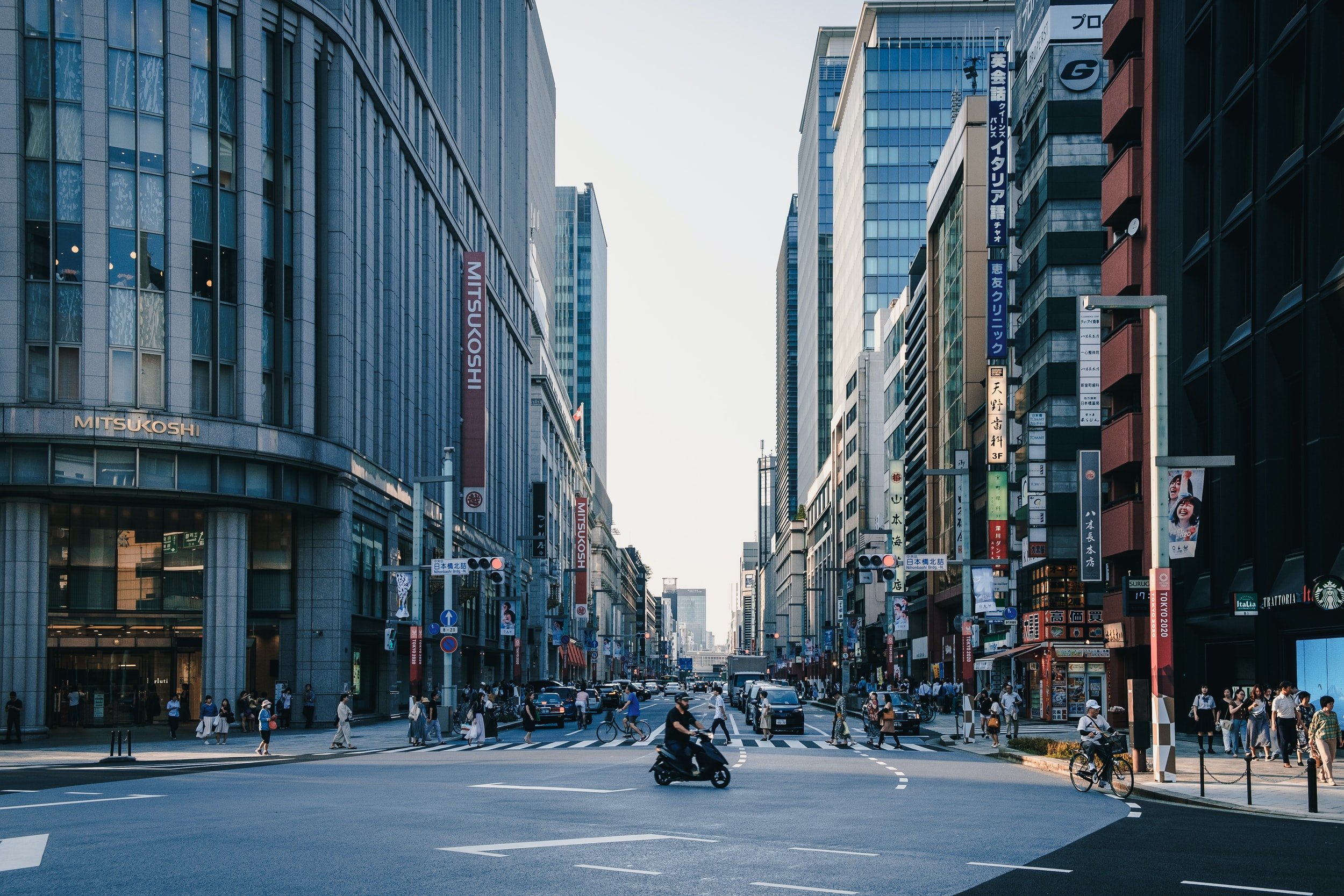Row boats in Chidorigafuchi moat in Tokyo during cherry blossom season
Tokyo has an endless amount of things to experience. Some would even say that 1 month is not enough to see all of Tokyo! This blog will cover all the best walking routes to do in Tokyo. Travel in Tokyo can easily be done by walking or commuting by train. In fact, we highly recommend taking the train and walking around Tokyo compared to using a car/taxi. Check out our top 5 places to take a walk in Tokyo below.
Top 5 Walking Routes in Tokyo - Table of Contents
1. Yanaka Ginza
The Yanaka Ginza shopping street is a nice afternoon walk to take a look at small mom-and-pop shops. The old town ambience survives in this district and you can experience a nostalgic blast from the past. You can start at Nippori Station’s West Exit and continue straight down the road where you will be greeted for it’s famous arches. If you’re there in the afternoon, it’s a popular photogenic spot to take a nice photo!
The starting point of our self guided audio tour in Nihonbashi
2. Sumida River
Sumida river is one of Tokyo’s main rivers that run through the city. We highly recommend starting in Asakusa right by the Azuma Bridge where you can go in either direction for a nice walk. During cherry blossom season, you’ll be greeted with nice cherry blossoms. You can even take a boat ride up the river from the port on Azuma bridge!
A rare scroll painting that you can find on our Nihonbashi tour.
3. Shimokitazawa
If you’re looking for rare, vintage, and hip, Shimokitazawa is the perfect neighborhood for a nice stroll. Known for its funky, bohemian-style atmosphere, you’ll find dozens of vintage music shops, bookstores, second-hand clothing shops, cafes, and bars. You can access Shimokitazawa through the Shinmkitazawa station on the Odakyu, or Keio-Inokashira lines.
4. Nihonbashi
Nihonbashi is one of Tokyo’s oldest districts. Upon heading into the area, you’ll notice that it has fancy department stores and financial districts. But don’t let that turn you off. Hidden inside and in between these buildings are stores that are hundreds of years old, and some of the best food that Tokyo has to offer. The history hidden behind the entire area will definitely surprise you! You can take a stroll around this area through our self-guided audio tour app, or simply start at the Nihonbashi bridge.
A massive wooden sculpture inside the Mitsukoshi Department Store - one of the stops.
5. Nakameguro
Nakameguro is a bit similar to Shimokitazawa but with more of a city feel to it. It’s got cool bars, book stores, cafes, small shops, and much more. During the cherry blossom season, you can head over to the Meguro river to see one of Tokyo’s best places to see cherry blossoms.
Interested in getting a self-guided audio tour? Make sure to download Voice Map! Contact us below!
Interested in a Hello! Tokyo Tour? Contact us!
Connect with us for fun content!









![EXCITING WALKING ROUTES TO DO IN TOKYO [TOP 5 TOKYO WALKING TOURS]](https://images.squarespace-cdn.com/content/v1/5d3ee66abacfa00001df6854/1666679584460-DCDE96HPOFYSZW95RHEV/unsplash-image-824OwkP7sgk.jpg)






![FREE SELF-GUIDED AUDIO TOUR IN TOKYO! [4 REASONS TO TRY A SELF-GUIDED AUDIO TOUR]](https://images.squarespace-cdn.com/content/v1/5d3ee66abacfa00001df6854/1634201426095-VPPUAZNVRUX69K4KVH7K/nihonbashi-walking-tour.jpg)



![SOUVENIRS TO BUY ON TOKYO TOURS [4 PLACES FOR SOUVENIR SHOPPING IN TOKYO]](https://images.squarespace-cdn.com/content/v1/5d3ee66abacfa00001df6854/1661105533384-ALFWDTVLC44J8W32UAQ3/unsplash-image-3vrh8MblY28.jpg)




![3 FOODS TO TRY IN TOKYO [OUR TOP PICKS FROM A TOKYO FOOD TOUR]](https://images.squarespace-cdn.com/content/v1/5d3ee66abacfa00001df6854/1659723019524-5I1Z8F3XWKH318SGA6LR/unsplash-image-layMbSJ3YOE.jpg)

























